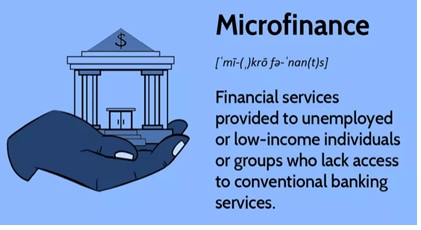Study of NPA Management and its Impact on Banking Sector
DOI:
https://doi.org/10.54741/ssjar.3.1.8Keywords:
financial service, women empowerment, microfinance, banking sector, npa, annual reportsAbstract
The goal of the study is to learn more about India's microfinance institutions' non-performing assets. non-performing assets of SHGs, women's SHGs, public sector banks, and private sector banks in relation to various microfinance programs and schemes, including Swarnim Rojgar Yojna. The ANNOVA approach has been used to test hypotheses. Conclusion: Private sector banks and cooperative banks are more effective at controlling non-performing assets (NPA) and keeping them at a minimum level than public sector banks. Furthermore, research shows that public sector banks perform better at supporting microfinance programs and providing financing for them than private sector banks or cooperative banks.
Downloads
References
Bryman, A., & Bell, E. (2011). Business research methods. (3rd ed.). Oxford: Oxford University Press.
Schaefer, R.A.B., & Erskine, L. (2012). Virtual team meetings: Reflections on a class exercise exploring technology choice. Journal of Management Education, 36(6), 777-801.
Pazos, P. (2012). Conflict management and effectiveness in virtual teams. Team Performance Management: An International Journal, 18(7/8), 401–417.
Magnusson, P., Schuster, A., & Taras, V. (2014). A process-based explanation of the psychic distance paradox: Evidence from global virtual teams. Management International Review, 54(3), 283-306. Retrieved from https://www.nabard.org/financialreport.aspx?cid=505&id=24.
https://www.investopedia.com/terms/m/microfinance.asp.
Sengupta, R., and H. Vardhan. (2017). Non-performing assets in Indian Banks: This time it is different. Economic & Political Weekly, 52(12).
Singh, S., & Singh, C. (2017). Growth of non- performing assets in microfinance institutions: An evidence from India. IOSR Journal of Business and Management, 14-22. 10.9790/487X-1906061422.
Neelima, K.M., & S. A. and Kumar. (2017). Non-Banking Financial Companies in India’s Financial Landscape. RBI Bulletin, pp. 91–104.
S, S., & Dash, D. P. (2017). Growth and distribution of microfinance in India: A panel data analysis. Theoretical and Applied Economics, XXIV. 127-146.
Bhatt, V., & Parekh, B. (2019). Empirical analysis of non-performing assets of microfinance institutions in Gujarat. Roots International Journal of Multidisciplinary Researches, 16-23.
Handke, L., Klonek, F. E., Parker, S. K., & Kauffeld, S. (2020). Interactive effects of team virtuality and work design on team functioning. Small Group Research, 51(1), 3-47.
Derven, M. (2016). Four drivers to enhance global virtual teams. Industrial and Commercial Training, 48(1), 1-8.
Pandey, G. D., & Ojha, S. K. (2020). Covid-19 Effects on Microfinance Institutional (MFIS) Activities With Reference To Nepal. International Journal on Recent Trends in Business and Tourism, 4(4), 4-8. Available at: https://ejournal.lucp.net/index.php/ijrtbt/article/view/1210.
https://slideplayer.com/slide/6811163/.
Turesky, E., Smith, C. D., & Turesky, T. K. (2020). A call to action for virtual team leaders: Practitioner perspectives on trust, conflict and the need for organizational support. Organization Management Journal, 17(4/5), 185-206.

Downloads
Published
How to Cite
Issue
Section
ARK
License
Copyright (c) 2023 Dr. Nripendra Kumar Shar

This work is licensed under a Creative Commons Attribution 4.0 International License.
Research Articles in 'Social Science Journal for Advanced Research' are Open Access articles published under the Creative Commons CC BY License Creative Commons Attribution 4.0 International License http://creativecommons.org/licenses/by/4.0/. This license allows you to share – copy and redistribute the material in any medium or format. Adapt – remix, transform, and build upon the material for any purpose, even commercially.










